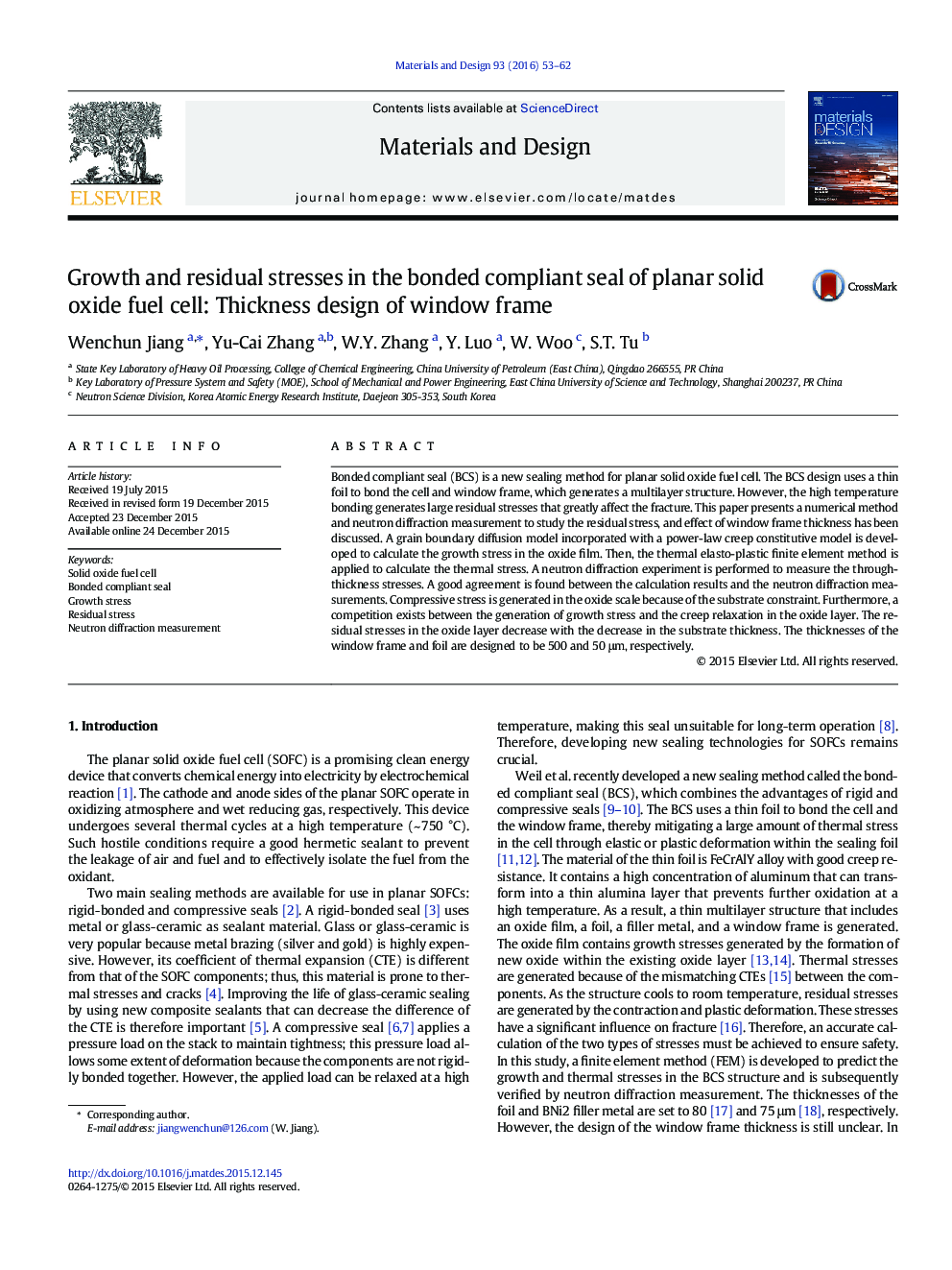| کد مقاله | کد نشریه | سال انتشار | مقاله انگلیسی | نسخه تمام متن |
|---|---|---|---|---|
| 828159 | 1470289 | 2016 | 10 صفحه PDF | دانلود رایگان |
• Growth stress accounts for 40% of residual stress when the substrate thickness exceeds 4 mm.
• Growth stress accounts for about 20% of residual stress when the substrate thickness is below 3 mm.
• The thickness of window frame is designed as 500 μm.
Bonded compliant seal (BCS) is a new sealing method for planar solid oxide fuel cell. The BCS design uses a thin foil to bond the cell and window frame, which generates a multilayer structure. However, the high temperature bonding generates large residual stresses that greatly affect the fracture. This paper presents a numerical method and neutron diffraction measurement to study the residual stress, and effect of window frame thickness has been discussed. A grain boundary diffusion model incorporated with a power-law creep constitutive model is developed to calculate the growth stress in the oxide film. Then, the thermal elasto-plastic finite element method is applied to calculate the thermal stress. A neutron diffraction experiment is performed to measure the through-thickness stresses. A good agreement is found between the calculation results and the neutron diffraction measurements. Compressive stress is generated in the oxide scale because of the substrate constraint. Furthermore, a competition exists between the generation of growth stress and the creep relaxation in the oxide layer. The residual stresses in the oxide layer decrease with the decrease in the substrate thickness. The thicknesses of the window frame and foil are designed to be 500 and 50 μm, respectively.
Figure optionsDownload as PowerPoint slide
Journal: Materials & Design - Volume 93, 5 March 2016, Pages 53–62
